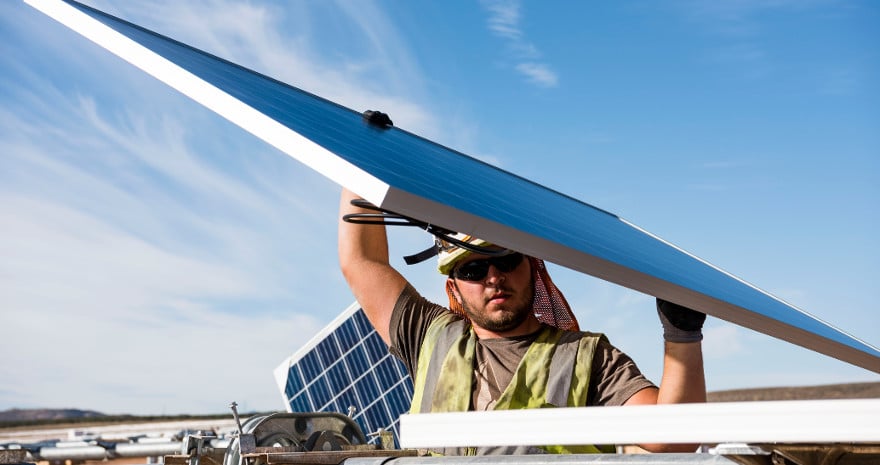Since the surprise announcement last week by the Chinese government that it would make multiple unfavorable changes for the compensation of solar projects, analysts have been scrambling to determine how this move by the world’s largest solar market will affect other markets around the globe.
The United States is no exception. And, while there are still many unknowns, a few things are certain. The Chinese market will contract, leading to oversupply. In the highly liquid global solar panel market, prices will fall and, while BNEF has put out a figure of 34% declines over the course of 2018, other some analysts are reticent to put numbers on this.
For the U.S. solar market, which has been impacted by import duties under the Section 201 process, this is good news. For U.S. manufacturers – including those who are building or buying factories – it is not.
Downstream boost
“If there is downward pressure on module prices, it is just great if you are downstream,” Tony Clifford, the chief development officer at Standard Solar, told pv magazine. “The price drops will certainly be substantial, and they could well be dramatic.”
Clifford says that the module price decreases that he is hearing could revive some projects that were sidelined due to the tariffs.
“There are markets where you just can’t make the deals pencil,” notes Clifford. “Areas where you don’t have the state or local incentives, but solar was getting cheap enough last year that you could build there with pre-tariff… those markets that we had written off, we are going to get back into more serious play. Which is exciting.”
MJ Shiao, GTM Research Head of Americas Research, has a similar perspective. He expects to see module prices falling to the high 30-cent per watt range, including the tariff cost. This is around the same as was seen in early 2017, a year before the tariffs took effect.
Neither Shiao nor Clifford thinks that the fall in prices will completely offset the effect of the Section 201 tariffs. “We are probably not back to a pre-201 situation,” Shiao told pv magazine. However, he notes that a global fall in module prices will “mute some of those effects.”
Both Shiao and Clifford expect the biggest price fall to come towards the end of 2018. This is timely, given that GTM Research expected the most severe impacts from Section 201 to come in 2019. “It will take some of the teeth out of the demand that was reduced,” says Shiao.
As was the case with the Section 201 tariffs, the largest impacts will be on the utility-scale sector, where modules make up the highest portion of system costs.
Re-evaluating contracts
The shortness in module availability driven by the Section 201 process drove developers to attempt to lock in module supply, but now this dynamic may reverse. pv magazine has heard rumors of some very large module contracts being cancelled, but it is unclear if these are due to changing market conditions or other factors.
Shiao says that he expects some long-term contracts to be renegotiated. “Every developer has to play this game,” notes Shiao. “Definitely any time some announcement like this happens, folks on the demand side smell blood in the water, and try to renegotiate as much as they can.”
He says the issue will be the degree to which developers can get away with this, and to what degree suppliers will be willing to renegotiate.
Overall, the pending decline in China’s market may be bad news for global solar deployment, and certainly is terrible for manufacturers. However, it may be very good news for U.S. developers.
In the second part of this article, we will examine the ramifications of these changing circumstances for the U.S. cell and module manufacturing sector.
This content is protected by copyright and may not be reused. If you want to cooperate with us and would like to reuse some of our content, please contact: editors@pv-magazine.com.









It has certainly hit suppliers hard as far as share price, but I would think the 30% tariff this year and 25% next year would protect U.S. manufacturers, primarily FSLR, at least for the next couple of years until all this shakes out. I’m not sure why the author thinks that contracts would be renegotiated given that there may not be much of a difference in panel prices in the U.S. market. If the Chinese panel producers sell at a price to offset the tariff, as leveraged as they are, I can’t see some of them surviving this.
Agreed with all of your points; except to note that in concluding that some contracts may be renegotiated, I am citing the opinion of MJ Shiao. Also, the part about manufacturing I will report on in more detail tomorrow after I have more information from the companies in question. Regardless, a massive fall in global module prices is bad news for anyone building or buying a factory. Anywhere.